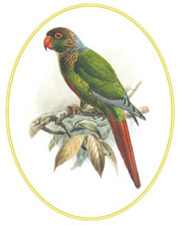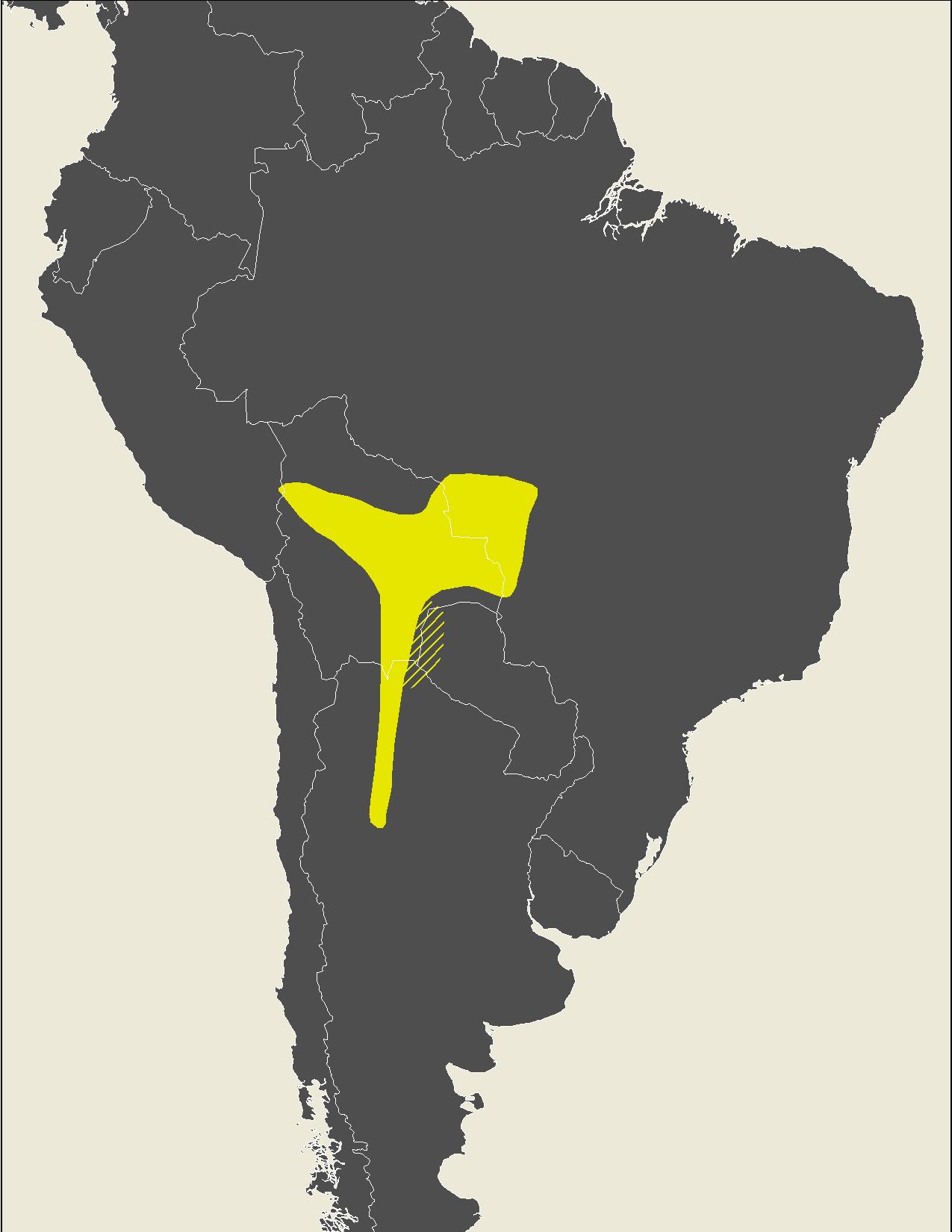- Green-cheeked Conure
Taxobox
name = Green-cheeked Conure
status = LC | status_system = IUCN3.1

image_caption = 1888 painting byPhilip Lutley Sclater

image2_width = 200px
image2_caption = A Green-cheeked Conure family
regnum =Animal ia
phylum = Chordata
classis = Aves
ordo =Psittaciformes
familia =Psittacidae
genus = "Pyrrhura "
species = "P. molinae"
binomial = "Pyrrhura molinae"
binomial_authority = Massena & Souance,1854
range_
range_map_width=200px
range_map_caption =Approximate range. Now also confirmed for lined area.The Green-cheeked Conure ("Pyrrhura molinae"), is a small
parrot of the genus "Pyrrhura ". The name Green-cheeked Conure is primarily used inaviculture , while the name Green-cheeked Parakeet is used elsewhere. It is primarily green, with a grey breast, dark head, maroon tail and blue flight feathers. Its normal weight is about 70 g; its average length (including tail) is 25 cm (10 inches).It occurs in west-central and southern
Mato Grosso ,Brazil , through northern and easternBolivia to northwesternArgentina . Its habitat is forests and woodland, where it forms big flocks at treetop level. It eats various seeds and fruits and probably other kinds of vegetable matter.Green-cheeked Conures are common in
captivity . They are playful, affectionate and intelligent, known as having a "big personality in a small body". They can learn to talk, albeit with a limited vocabulary and a gravelly voice. They like to be held (although some like it more than others) and can learn tricks such as lying on their backs and "kissing." Along with other "Pyrrhura" conures, they are only moderately loud, therefore making acceptable pets for apartment dwellers. They can be prone to biting, particularly when young, but an owner can cure this behavior with patience and time. They love fruits, (especiallybanana s andraisin s), and seeds such assunflower ,safflower andhemp seeds; all things found in their natural environments. Green-cheeked Conures also love table food; they are flock animals and love to eat with their family. They can eat potatoes, carrots, corn, well cooked meat, bread, pasta, plain popcorn, and even eggs. It is advised not to feed them oil seeds such as sunflower seeds because they are addictiveFact|date=September 2007 and do not contain the proper nutrition. Sunflower seeds and peanuts contain high amounts of fat. While this is helpful for birds in the wild, a clipped and/or caged bird can develop health problems from eating too much fat. A bird-pellet diet with acalcium supplement will give them the proper nutrition, but should not be used exclusively due to the presence of trace chemical additives and bonding agents not found in the conure's natural habitat.Fact|date=September 2007 A good rule of thumb is 30% pellet diet, 10% seeds, and the rest being fresh foods- fruits, vegetables, or cooked food. Some conures with health problems related to the kidneysFact|date=February 2007 should not be fed pellets. Green-cheeked conures can live to 30 years with proper care, though the average lifespan is typically 10 years due to owner neglect [ [http://www.centralpets.com/animals/birds/parrots/prt1342.html Green Cheeked Conure, Central Pets Educational Foundation] ] .The average clutch is 4–6 eggs. Average incubation is 24 days, varying from 22 to 25 days.
Subspecies
Green-cheeked conures consist of several subspecies including:
* "australis"
* "molinae"
* "phoenicura"
* "restricta"
* "sordida": yellow-sided green-cheek
* "chad"Most subspecies vary in coloration and range. "Pyrrhura Phypoxantha" was once considered to be a separate species, but is now classified as a mutation of the "sordida" subspecies. Greencheeks are very similar to the
Maroon-bellied Conure ("P. frontalis") and there is some speculation that they may be conspecific, though this has not been confirmed [Juniper & Parr (1998) "Parrots: A Guide to Parrots of the World" p 462. ISBN 0-300-07453-0] .References
* Database entry includes justification for why this species is of least concern
External links
* [http://members.tripod.com/gcch/faq/faq1.html FAQ: Introduction to Green Cheeks]
* [http://www3.upatsix.com/ica/lexicon/greencheeked.htm Green Cheeked "Pyrrhura molinae"] from the International Conure Association
* [http://www.hbw.com/ibc/phtml/especie.phtml?idEspecie=2280 "Pyrrura molinae"] , videos of wild birds from the Internet Bird Collection
* [http://vireo.acnatsci.org/search.html?Form=Search&SEARCHBY=Scientific&KEYWORDS=pyrrhura+molinae&showwhat=images&AGE=All&SEX=All&ACT=All&Search=Search&VIEW=All&ORIENTATION=All&RESULTS=24 "Green-cheeked Conure" photo gallery] VIREO
Wikimedia Foundation. 2010.
